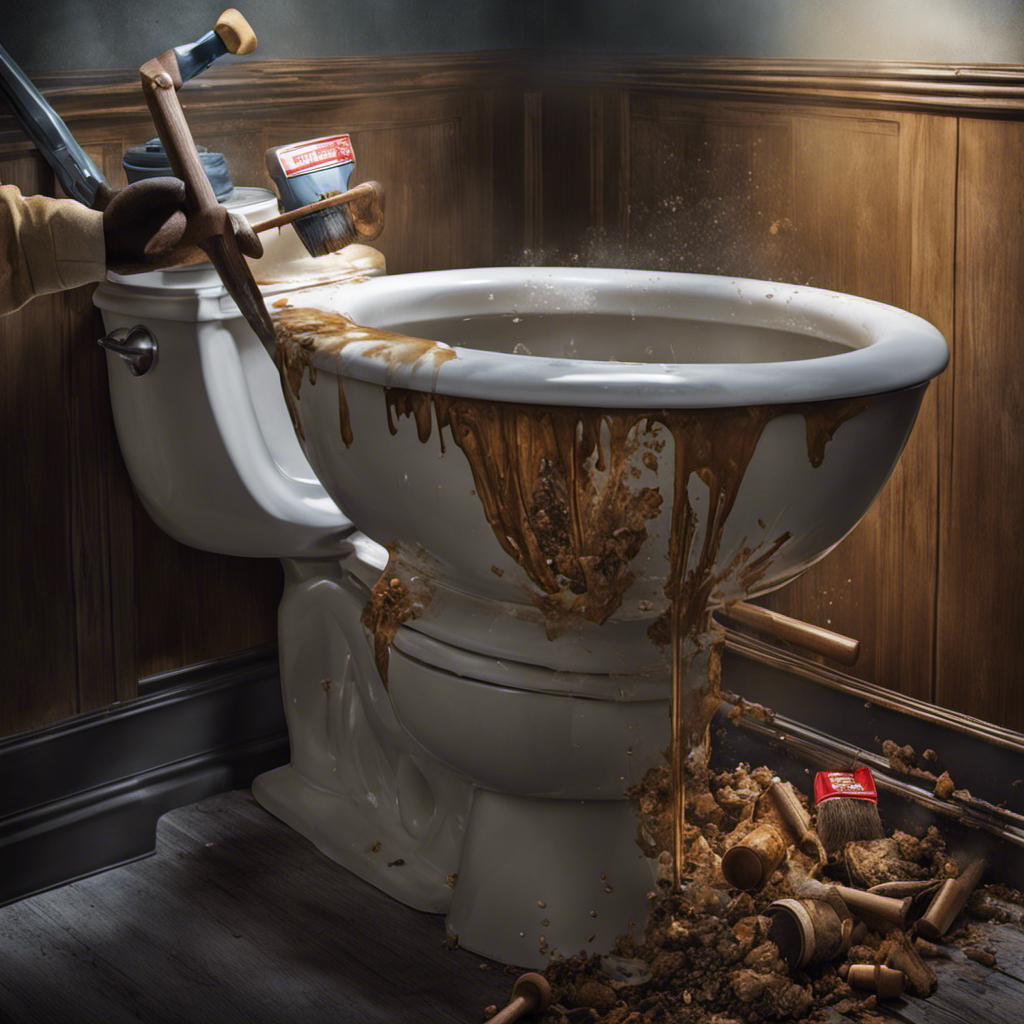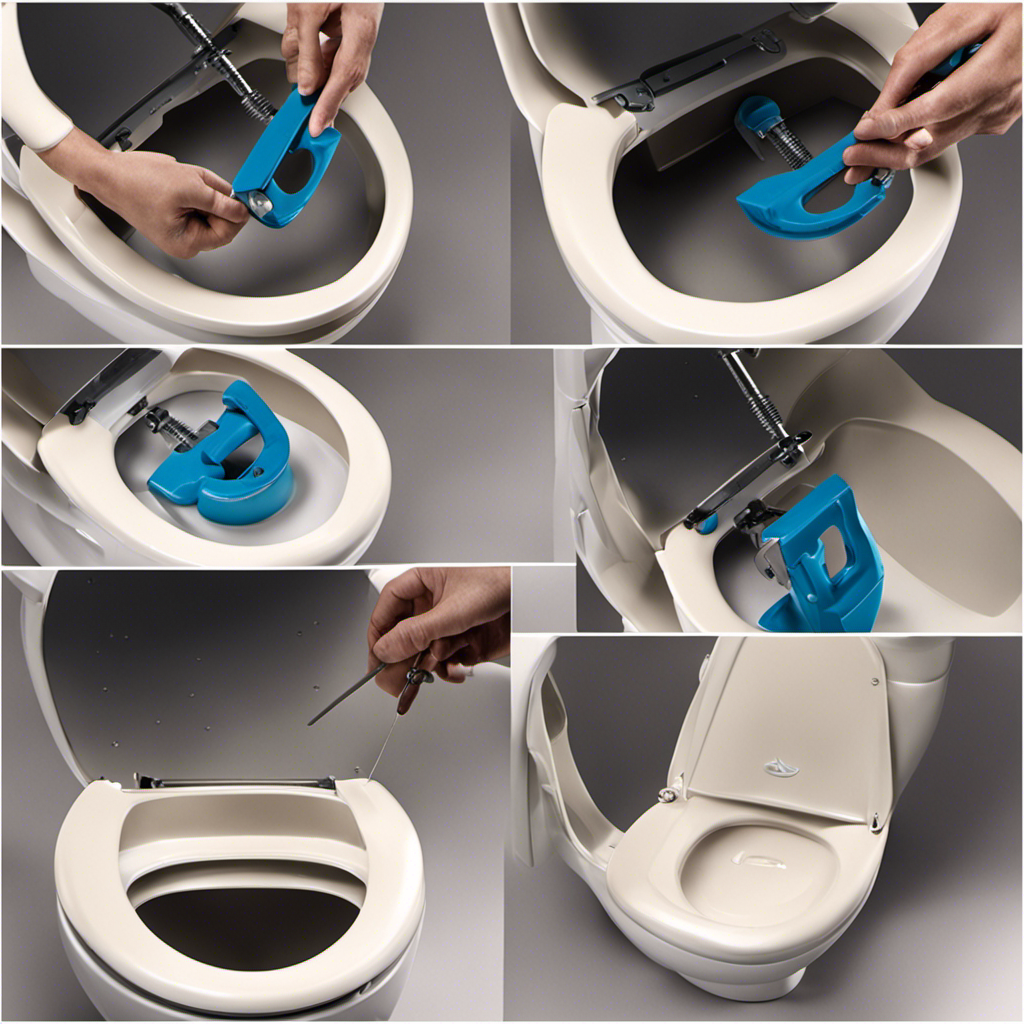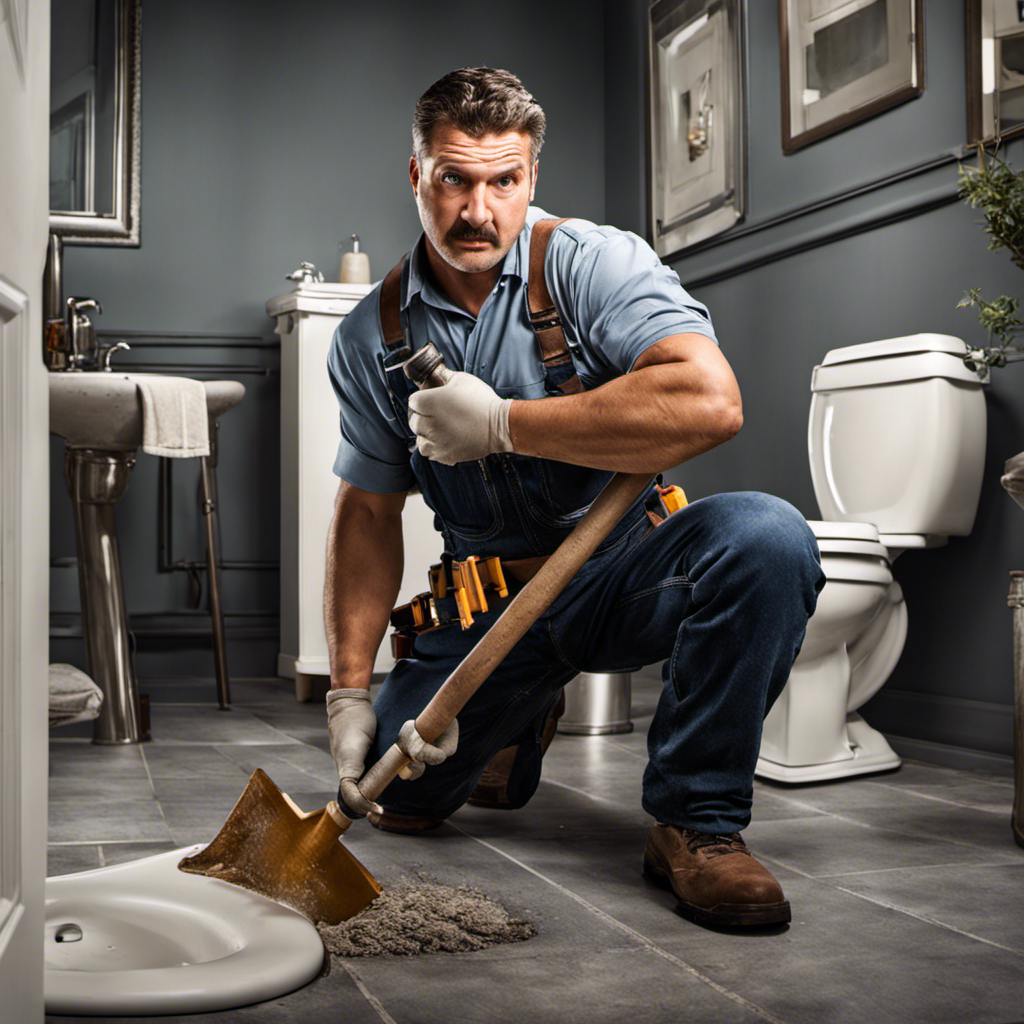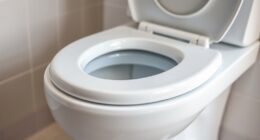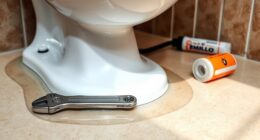As I stand here, facing the daunting task of a clogged toilet, I can’t help but feel a surge of determination. With the right knowledge and technique, I know I can conquer this common household dilemma.
In this article, I will guide you through the steps of plunging a clogged toilet, providing you with the expertise and troubleshooting tips to ensure success.
Say goodbye to those pesky clogs and hello to a smoothly functioning toilet once again. Let’s dive in!
Key Takeaways
- The plunger is a simple and effective tool used to clear clogged toilets.
- Proper technique is important when using a plunger, including creating a tight seal and using a vigorous up-and-down motion.
- Troubleshooting tips include checking for visible debris, adjusting water levels, and clearing vent pipes.
- To prevent future clogs, properly dispose of items, regularly clean the toilet bowl, and consider using a toilet auger or snake for stubborn clogs.
Understanding the Plunger
Before you start plunging, it’s important to understand how the plunger works. The plunger is a simple yet effective tool used to clear clogged toilets. It consists of a rubber suction cup attached to a wooden or plastic handle.
The key to successful plunging lies in maintaining the plunger properly. After each use, it’s essential to rinse the plunger with hot water and disinfect it to prevent the spread of bacteria. Additionally, inspect the suction cup for any tears or cracks, as this can affect its performance.
When it comes to plungers, there are different types available, such as the standard cup plunger and the flange plunger. The cup plunger is suitable for most clogs, while the flange plunger is specifically designed for toilets with an elongated drain opening.
Understanding the maintenance and different types of plungers will ensure that you can effectively unclog your toilet.
Preparing the Toilet
To get started, make sure you’ve gathered all the necessary supplies for preparing the toilet. Toilet maintenance is crucial to prevent common causes of clogs.
First, put on a pair of rubber gloves to protect your hands from any potential mess.
Next, locate the shut-off valve behind the toilet and turn it off to stop the water flow. This step is important to avoid any overflow while plunging.
Additionally, place old towels or newspapers around the base of the toilet to catch any water that may spill during the process.
Lastly, ensure you have a good quality plunger with a rubber suction cup that can create a tight seal around the drain.
Following these steps will ensure a successful plunge and help maintain a clog-free toilet.
Proper Plunging Technique
Make sure you’re standing in a sturdy position with your feet firmly planted on the ground. This will provide stability and prevent any accidents while plunging.
Now, let’s talk about the proper plunging technique. Here are some key points to keep in mind:
- Hold the plunger with both hands, placing the rubber cup over the drain opening.
- Apply downward pressure and create a tight seal by pressing the plunger firmly against the toilet bowl.
- Use a vigorous up-and-down motion to generate suction and dislodge the clog.
- Avoid using excessive force, as it can damage the toilet.
- Don’t rush the process; be patient and persistent.
- If the clog doesn’t clear after a few attempts, try using an alternative method like a toilet auger or a chemical drain cleaner.
Remember, these techniques can help avoid common mistakes and increase your chances of success.
Now, let’s move on to troubleshooting tips to tackle more challenging clogs.
Troubleshooting Tips
First, check if there is any visible debris or objects obstructing the drain before attempting any other troubleshooting methods. It’s important to identify and address common toilet problems before they escalate. DIY drain cleaning can save you time and money, but it’s crucial to know the right steps to take. To help you troubleshoot, here are some common issues and possible solutions:
| Common Problem | DIY Solution |
|---|---|
| Weak flush | Adjust water level |
| Slow draining | Use a plunger |
| Gurgling noises | Clear vent pipes |
| Overflowing bowl | Remove clog |
Preventing Future Clogs
By properly disposing of items and avoiding flushing anything other than toilet paper and waste, you can significantly reduce the risk of future clogs in your toilet. Here are some additional tips to help you with toilet maintenance and clog prevention:
-
Regularly clean your toilet bowl to prevent build-up of mineral deposits, bacteria, and mold.
-
Install a lint catcher on your washing machine’s drain hose to prevent lint and debris from entering your plumbing system.
-
Consider using a toilet auger or snake to remove any stubborn clogs that may be forming deep within your pipes.
-
Avoid using chemical drain cleaners, as they can damage your pipes over time and may not effectively remove clogs.
-
If you notice any signs of a potential clog, such as slow draining or gurgling sounds, address the issue promptly to prevent it from becoming a major problem.
Following these tips will help ensure that your toilet stays clog-free and in good working condition for years to come.
Conclusion
In conclusion, plunging a clogged toilet is like summoning a superhero to save the day.
With the right tools and technique, you can conquer any blockage and restore peace to your porcelain throne.
Remember to prepare the battlefield, wield your plunger with confidence, and troubleshoot any stubborn foes.
By following these steps and taking preventative measures, you’ll be the master of unclogging, and your toilet will thank you with a triumphant flush.
So go forth, brave homeowner, and plunge away!
